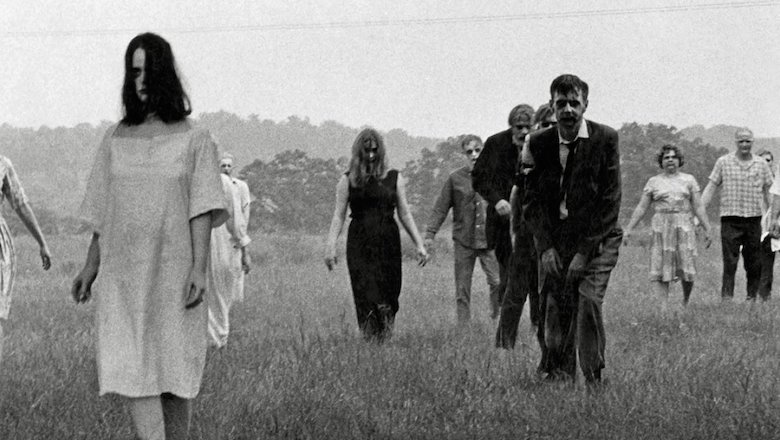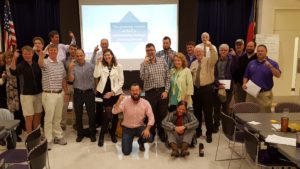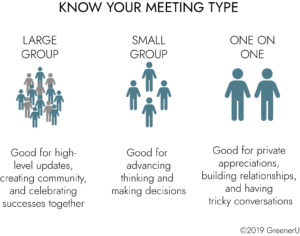Wiping out institutional zombies: how ECU is implementing its sustainability plan with soul
Many campus sustainability offices are challenged with the urgency of climate change against the pace of academia. So why are so many sustainability efforts still trapped in meetings that resemble the undead?

When ECU completed its sustainability strategic plan last year with help from GreenerU, sustainability manager Chad Carwein and the ECU community was tasked with the next daunting challenge: operationalizing the plan.
ECU had created four sustainability priorities and specific working groups to develop goals within each category: (1) climate change mitigation, (2) academics and research, (3) campus grounds, and (4) materials management. The working groups were particularly mindful of creating goals and strategies that could hit the ground running, including timelines and costs.
Implementation was easier said than done, though. Some age-old habits needed disrupting.
Institutional zombies
At the 2018 AASHE conference in Pittsburgh, Carwein attended a session called Leveraging the Campus Sustainability Committee: Zombie Committees vs. Robust Change Agents. The theme was apt not only because of the Halloween season, but because so many campus sustainability offices are challenged with the urgency of climate change against the pace of academia.
During the Q&A, Carwein brought up an institutional zombie at ECU: large-scale sustainability group check-in meetings. In ECU’s case, about 50 campus stakeholders of various stripes were meeting monthly. That was not only a logistical nightmare; it was an inefficient and ineffective use of people’s time.
Some characteristics of zombies are worth noting here:
- Mobile but technically dead, without a heartbeat or other vital signs
- Unemotional, with no mercy toward victims
- Unaffected by injuries, even normally fatal ones, as long as the brain isn’t damaged badly
- Contagious: a person that is bitten by a zombie will become a zombie
Sound familiar?
In the session, Carwein surveyed the room and found that, in fact, most (if not all) participants were holding regular sustainability large-group check-in meetings on their campuses as well, and that most of these meetings were sucking the life out of the drive to make change. The threat of this institutional zombie could be responsible for disabling entire armies of well-meaning climate-change activists.
“We were just meeting for the sake of having a meeting, and not even posting minutes to make the information publicly available,” he said. “It was business as usual.” And nothing was moving forward.
What if, Carwein wondered, ECU revamped its approach?
Capability building
 As many sustainability leaders and others are aware, there is seldom an abundance of resources available to implement plans. And yet without the increased capabilities required to make substantial change, a major effort can fall flat.
As many sustainability leaders and others are aware, there is seldom an abundance of resources available to implement plans. And yet without the increased capabilities required to make substantial change, a major effort can fall flat.
Harvard Business Review puts this eloquently. “Developing capabilities requires experimentation, trial and error, and iterative learning to figure out what will work in each organization’s unique culture, functional structure, and environment. Faced with lengthy lists of best practices and new processes that don’t match reality, teams simply give up and revert to old patterns of behavior.”
Capability building in facilitating processes has been a crucial feature of Carwein’s current success. “Actually working through a practice session and receiving constructive criticism really helped,” he said, in reference to the facilitation training he went through as part of GreenerU’s strategic planning process philosophy. “I could not have been nearly as efficient or confident in meeting facilitation without that workshop.”
From the living dead to signs of life
 A one-person sustainability office for a major research campus in North Carolina, Carwein is dependent upon a village of colleagues whose first responsibility may be, say, teaching, or fundraising, or rescuing aging campus facilities.
A one-person sustainability office for a major research campus in North Carolina, Carwein is dependent upon a village of colleagues whose first responsibility may be, say, teaching, or fundraising, or rescuing aging campus facilities.
Thus, for Carwein, it’s crucial to make the best use of everyone’s limited time. So he’s instituted a new approach for creating change. Each of ECU’s four goals and accompanying strategies have implementation teams, and it’s up to them—with Carwein’s help, using his innate people skills and creative approach to problem-solving—to keep making progress.
Then, three times annually, Carwein hosts a four-hour summit with all team members to share updates. They post giant printouts of the strategic plan and its progress on the wall, giving a visual representation of the work to date.
“These big meetings are actually important—they’re a great opportunity to share accomplishments and identify synergies,” Carwein said. “People figure out ways to help each other.” And they achieve another critical purpose: they are an opportunity to reflect and celebrate.
Meetings with soul
What fundamentally shifted at ECU was when Carwein recognized that the institutional zombie version was ineffective due to a mismatched goals for the type of meeting he was holding.
What did Carwein do to change his approach? He started with desired meeting goals. From there he identified the right stakeholders and considered the number of people involved. Then was easier to map out the type of meeting needed to support the implementation of the sustainability strategic plan.
Participants of big information-sharing meetings “tend to restrict their participation to questions of clarification”—which is not a condition conducive to advance the thinking or make decisions, which strategic plan implementation meetings tend to require.
The fundamental lesson is this: think through your meeting goals very carefully, make sure they line up with the overall process goals, and use the right type of meeting to achieve your goals. These steps can bring the soul back to your campus sustainability work.
Interested in learning more about effective meetings? GreenerU can offer capability-building and facilitation training, as well as facilitation and strategic planning—because we want you to succeed long after the zombie apocalypse. Talk to us!
References
Ashkenas, Ron and Logan Chandler. “Your Strategy Won’t Work If You Don’t Identify the New Capabilities You Need.” Harvard Business Review; November 1, 2017.
Capps, Tavey; Batchelor, Lindsay; Nicolson, Craig; Small, Ezra; Zemanick, Sarah. “Leveraging the Campus Sustainability Committee: Zombie Committees vs. Robust Change Agents.” Association for the Advancement of Sustainability in Higher Education (AASHE) conference; Pittsburgh, PA. 2018.
Lind, Lenny and Sam Kaner. Facilitator’s Guide to Participatory Decision-Making. Second Edition. Jossey-Bass: San Francisco, CA; 1996.



